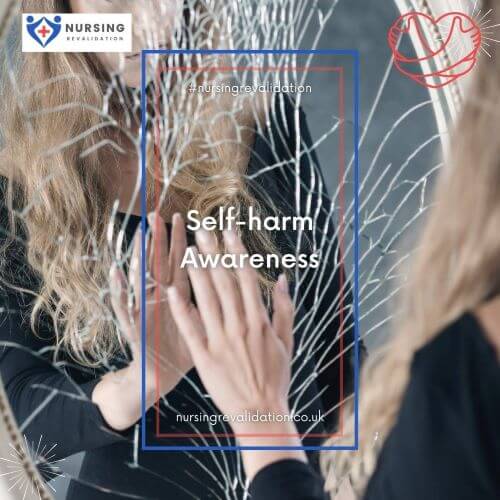Self-harming isn’t rare, especially among teens and young adults, but it’s generally kept hidden. Many people are able to overcome it with the help of treatment.
Whether a person has recently begun self-harming or has been doing so for long time, there is a way to enhance their health and reduce their habits. The first step toward understanding your behavior and finding relief is to speak with a doctor, a trusted friend, or a family member.
What Is Self-Harm?
Self-harm or self-injury refers to intentionally injuring oneself. Cutting using a sharp object is a frequent procedure. On the other hand, is defined as when someone intentionally harms themselves. To prevent wound healing, some people feel compelled to cause burns, rip out hair, or pick at wounds. Broken bones can occur as a result of severe injuries.
Self-injury, or the threat of self-injury, is a sign of emotional discomfort. If a person continues to use self-harm as a coping method, these unpleasant emotions may become even more acute. In the long run, learning new techniques to cope with mental suffering will make you stronger.
Shame is another side effect of self-harm. Scars from regular cutting or burning can last a lifetime.
Why people self-harm?
When someone deliberately harms or injures their own body, this is known as self-harm. Self-harm could be linked to current or previous negative experiences. However, there are situations when the cause is unknown. The reasons may change over time and will be different for each person. People may self-harm for a variety of reasons, including:
- expressing or coping with emotional distress
- trying to feel in control
- a way of punishing themselves
- relieving unbearable tension
- a cry for help
- a response to intrusive thoughts
Common causes of emotional distress
There are no clear guidelines when it comes to why people self-harm. Everyone’s experience can be very different.
Self-harm is tied to specific events for some people and is a technique of dealing with something that is either happening now or happened in the past. Others have less obvious causes that are harder to decipher. Some causes include:
- pressure at school or work
- being bullied
- family arguments or relationship problems
- money worries
- low self-esteem
- Stress, anxiety or depression
- confusion about sexuality
- grief after bereavement or loss
- physical or sexual abuse
- being in contact with the criminal justice system
How to support others who Self-Harms?
Mental Health First Aid trains you to follow the ALGEE action steps if you fear someone you know is self-injuring:
Evaluate the risk of harm:
If you see someone self-harming, see if medical help is required. Call 911 if the victim appears unconscious, confused, or disoriented, or if they are bleeding profusely. If you come across someone who has overdosed or consumed poison, call 911 immediately.
Listen without judgement:
If the person isn’t in immediate danger, start a conversation with them. Explain that you’ve noticed their behaviour and that you’re concerned for their safety. It’s critical to be nonjudgmental while speaking. Do not alarm or reprimand the individual. Maintain a cool demeanour while attempting to alleviate the source of the anxiety.
Provide reassurance and information
Tell them about S.A.F.E. Alternatives if they want or need additional information about what they’re going through (Self-Abuse Finally Ends).
Encourage help
Because self-injury is a symptom of a deeper problem, it’s critical to assist the individual in seeking help. Frequently, the person is suffering from psychological anguish or a mental disease that requires treatment. While you want to persuade the person, be sure they are making their own decisions about how to proceed with treatment. However, you are free to phone doctors to see if any are admitting new patients, accompany them to appointments, offer to drive, or assist in other ways.
To learn more strategies for self harm, common myths, causes and how to support people, take Self harm course. The course will teach you how to identify, understand and respond to signs of self-harm. Become part of a movement to change the culture around mental health and ne a responsible person.

